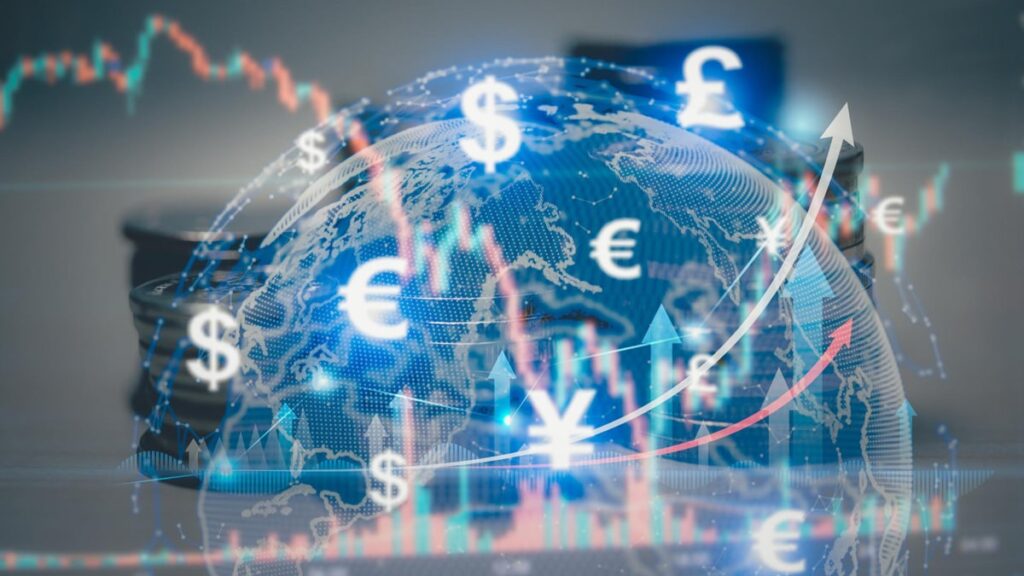In any economy, the value of its currency holds significant importance. Whether you’re an investor looking to make strategic financial decisions or simply interested in understanding the dynamics of the economy, grasping how the value of a currency, such as the Indian Rupee, is determined can provide valuable insights.
In an open money market, where currency exchange rates fluctuate based on various factors, understanding the mechanisms behind rupee valuation becomes crucial. In this article, we will discuss how is Rupee value determined, the Top 10 highest Currency in the world, and much more.

Table of Contents
Top 10 Highest Currency in the World’s Value in Rupee
The following are the world’s top 10 highest currency in the world-
| S.No | Currency | Currency Code | Conversion in Rupee |
| 1 | Kuwaiti Dinar | 1 KWD | 269.33 INR |
| 2 | Bahraini Dinar | 1 BHD | 220.01 INR |
| 3 | Omani Rial | 1 OMR | 215.33 INR |
| 4 | Jordanian Dinar | 1 JOD | 116.91 INR |
| 5 | British Pound | 1 GBP | 104.81 INR |
| 6 | Gibraltar Pound | 1 GIP | 104.81 INR |
| 7 | Cayman Island Dollar | 1 KYD | 99.48 INR |
| 8 | Swiss Franc | 1 CHF | 94.01 INR |
| 9 | Euro | 1 EUR | 89.63 INR |
| 10 | United States Dollar | 1 USD | 82.89 INR |
How is Currency Valued?
Currency valuation is a complex process and is influenced by multiple factors and is determined by the Central Bank of a Country. Understanding how currencies are valued is essential for investors, and policymakers. The following are some of the factors which determine the Currency Value-
Repo Rate
The repo rate is the rate at which the central bank of a country lends money to commercial banks in case the banks want more funds. In India, the Reserve Bank of India is the central bank that regulates the banking sector and makes monetary policies for the country to manage the economy.
The RBI manipulates the repo rate to manage the economy, when the central bank increases the repo rate, borrowing from it becomes more expensive for commercial banks. As a result, banks tend to reduce their borrowing and lending activities, leading to a decrease in the money supply in the economy.
This reduction in the money supply can result in a decrease in consumer spending and investment, leading to a decrease in demand for goods and services. Consequently, this can lead to a decrease in the value of the currency as investors may seek higher returns in other countries with relatively higher interest rates.
Conversely, when the central bank decreases the repo rate, borrowing becomes cheaper for commercial banks, leading to an increase in lending and borrowing activities. This increase in the money supply can stimulate economic growth, potentially leading to an increase in the value of the currency.
Inflation
Inflation refers to the rate at which the general level of prices for goods and services is rising, leading to a decrease in the purchasing power of money. Money is a determined value that is always valued against an asset like gold, oil, debt, etc.
Inflation can impact the value of a currency in several ways. Firstly, high inflation erodes the value of money over time, reducing its purchasing power. As a result, investors may lose confidence in the currency, leading to a decrease in its value relative to other currencies.
Central banks often raise interest rates to combat inflation by reducing the money supply and curbing spending.
Higher interest rates make borrowing more expensive, which can slow down economic activity and reduce inflation. Conversely, low inflation or deflation (negative inflation) can also impact currency value.
Capital Flow
Capital flow refers to the movement of money or investment capital into and out of a country’s economy. It includes both foreign direct investment (FDI) in businesses and assets, as well as portfolio investment in stocks, bonds, and other investments.
Capital flows can have a significant impact on the value of a country’s currency. When there is a net inflow of capital into a country, meaning more money is coming in than going out, it can lead to an appreciation of the country’s currency.
This is because increased demand for the currency from foreign investors raises its value relative to other currencies.
Several factors influence capital flows, including interest rate differentials between countries, economic growth prospects, political stability, and market sentiment.
Money Supply
Money supply refers to the total amount of money available in an economy at a particular point in time.
It includes physical currency in circulation, such as coins and banknotes, as well as various types of bank deposits, such as savings accounts, checking accounts, and other liquid assets.
The relationship between money supply and currency value is influenced by the principles of supply and demand. When the money supply in an economy increases, all else being equal, there is more money available to purchase goods and services.
This can lead to an increase in demand for goods and services, which may result in higher prices, a phenomenon known as inflation.
On the other hand, when the money supply decreases, there is less money available to spend, which can lead to a decrease in demand and downward pressure on prices, a situation known as deflation.
Central banks, such as the Reserve Bank of India (RBI), regulate the money supply in an economy through various monetary policy tools to achieve their macroeconomic objectives, such as price stability, full employment, and economic growth.
FAQ
Inflation is a phenomenon where the prices of a commodity tend to increase at a specific rate i.e. at the Inflation rate. Inflation can erode the purchasing power of a currency, leading to a decrease in its value. Higher inflation rates may lead to the depreciation of the currency as it reduces the value of each unit of currency in terms of goods and services.
Monetary policy decisions, such as changes in interest rates or money supply, can affect investor confidence, economic growth, and inflation levels, all of which can impact currency value.
A strong currency can benefit a country by making imports cheaper, reducing inflationary pressures, and attracting foreign investment. However, it may also make exports more expensive, potentially harming export-oriented industries. Therefore, the Central Bank needs to manage the currency value depending on the country’s aim.
I’m Shiv Kumar, a graduate with a passion for finance, marketing, and technology. My journey into finance started with a desire to understand money management and investing.
Our main goal is to empower individuals through financial education. We believe that everyone should have the opportunity to build a strong financial foundation. Whether you’re a seasoned investor or just getting started, we provide articles, guides, and resources to help you navigate the financial landscape.
I invite you to join our community of financially savvy individuals. Feel free to ask questions, engage with our content, and explore the topics that matter to you. Together, let’s take control of our financial futures.




